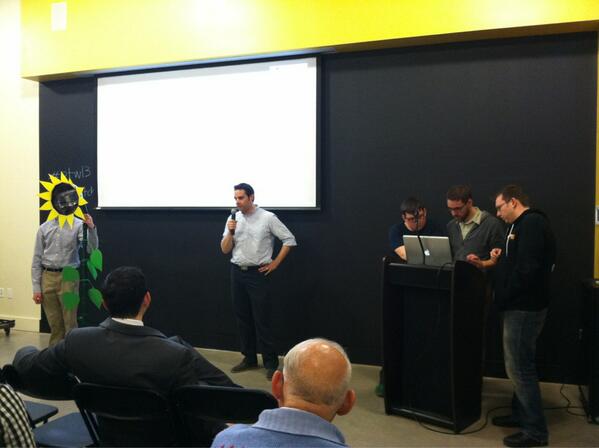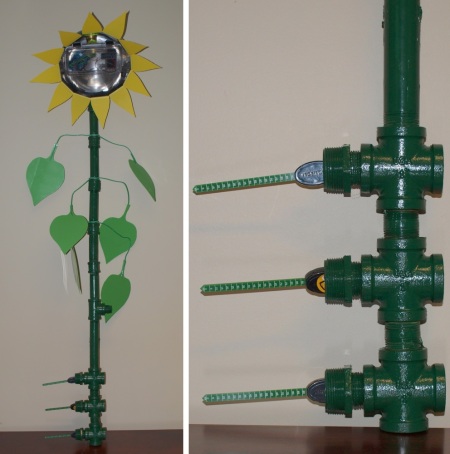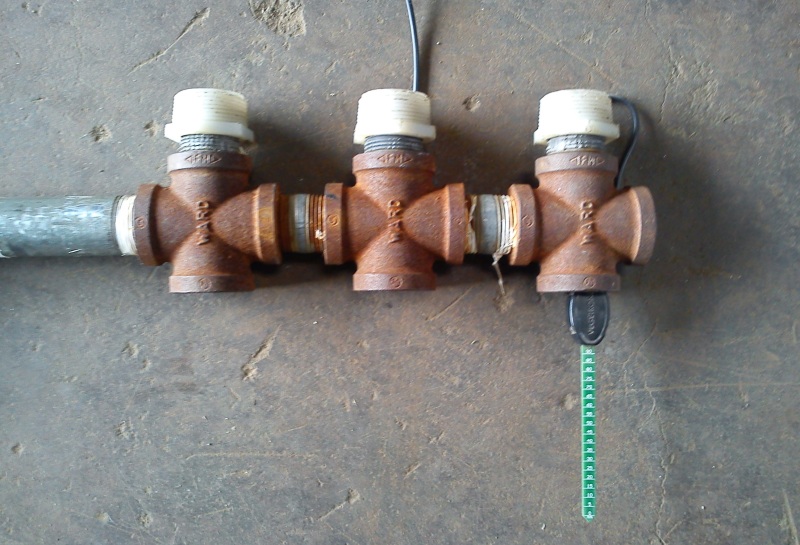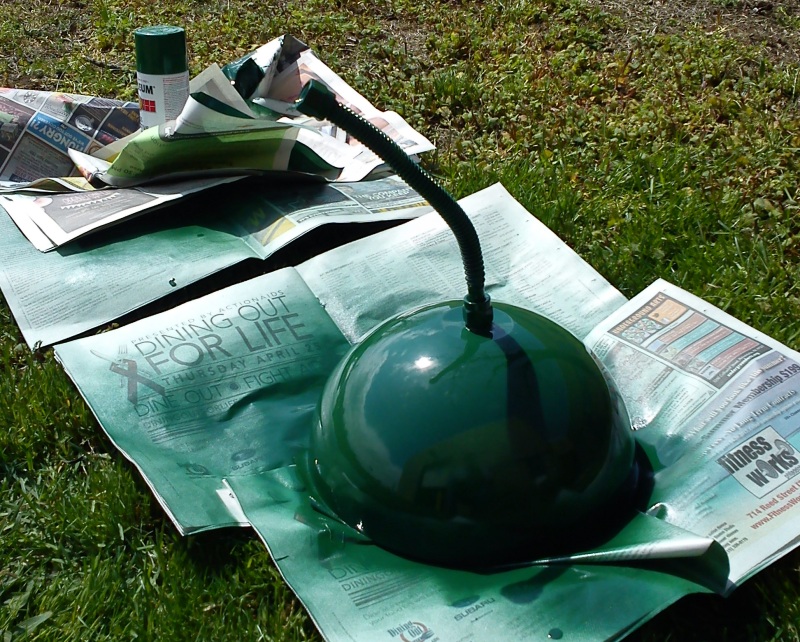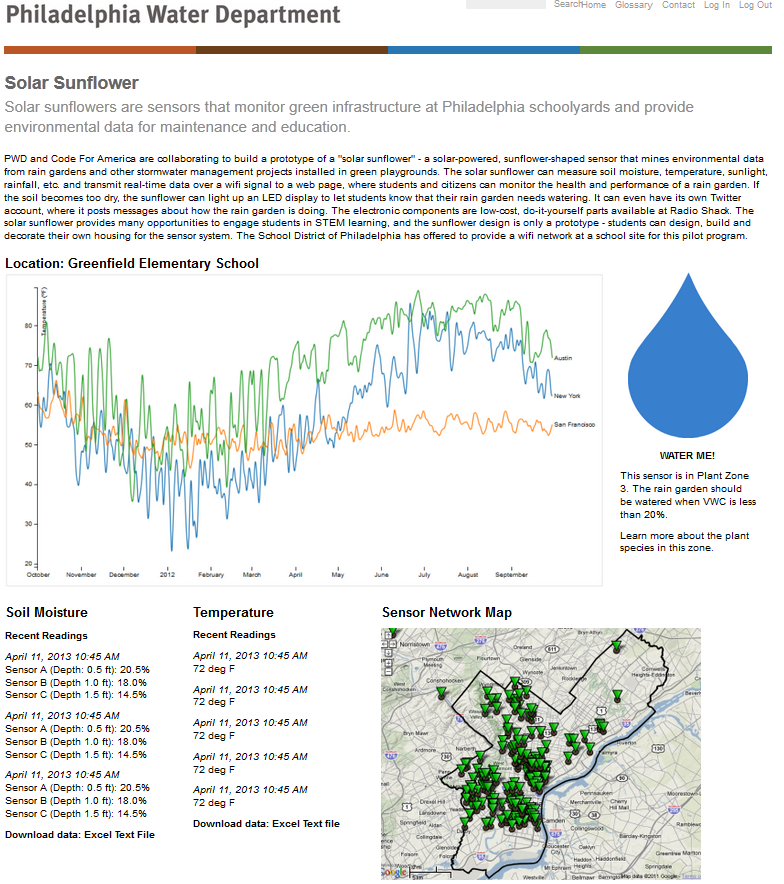Philly Tech Week 2013
That’s my co-worker, PWD engineer Chris Bergerson, at the Switch Philly event this week. He got his picture in the newspaper because he happened to be standing near the sunflower at some point. Nice job, Chris. (But for real, thanks to Chris and Tommy Thompson for helping out.) This photo shows the head of the sunflower a little bit better—the Arduino and battery pack are inside a waterproof plastic snap case, with a hole drilled in the back for the sensor wires. We didn’t put a covering over the electronics, because we wanted them to be visible for now. (It also makes it easier to access.)
Chris Nies, Kevin Clough, Jason Blanchard and I did a five-minute presentation and complete demo of the Solar Sunflower. We put the sunflower in a bucket of soil, poured some water into the bucket, and watched (apprehensively—soil moisture is not the most dynamic thing in the world) as the website updated data values in real time. A total success, and we took second place in the competition. Congratulations to the winning team (Temple MESA), a group of students who devised a tutoring application. Here’s some more coverage on Technically Philly.
Here we are at Switch Philly, with the sunflower doing a total eclipse of Tommy’s head.


